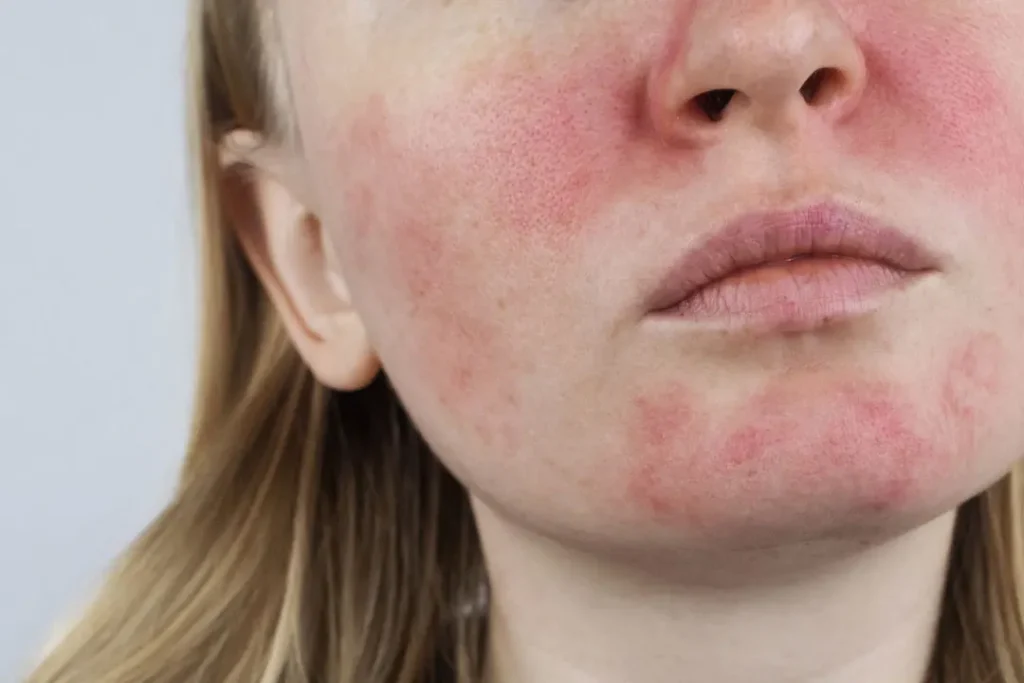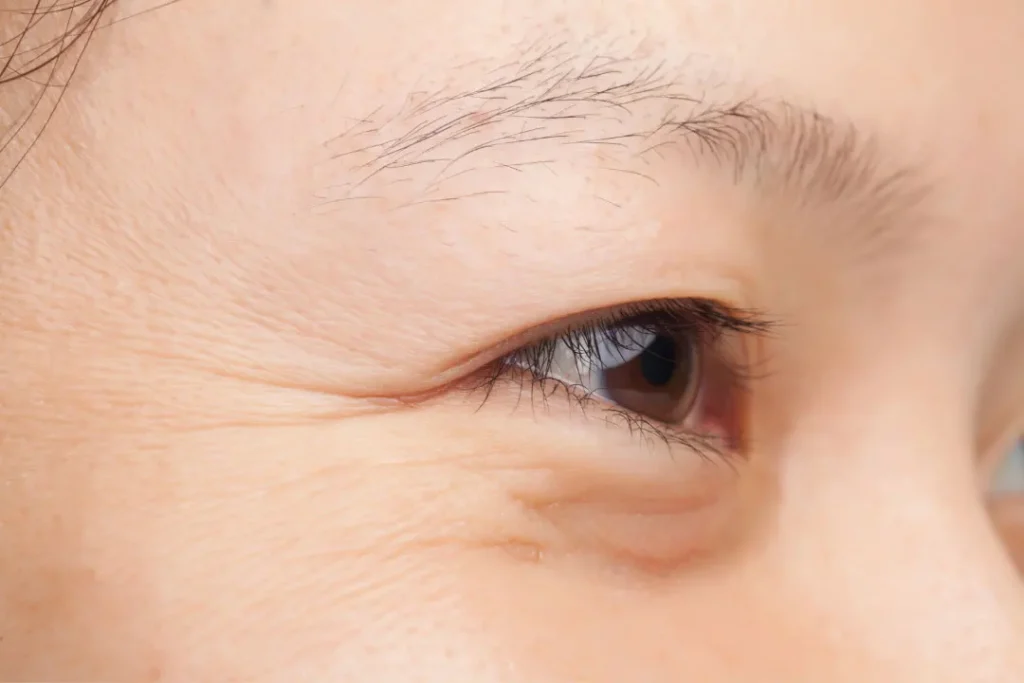Heparan sulfate analog (HSA) is a potent ingredient in premium skincare products with the potential to boost hydration, reduce the appearance of fine lines and wrinkles, promote skin restoration, reduce inflammation, and strengthen the skin barrier. We’ll discuss five great reasons to try a skincare product with HSA and recommend one of the best brands on the market.
Heparan sulfate analog (HSA) refers to a class of synthetic substances that mimic the functions of heparan sulfate, a naturally occurring compound. Heparan sulfate is a polysaccharide, a type of carbohydrate whose molecules are laid out in a long chain, and it plays an important role in certain biological processes of many animals, including humans.
In humans, heparan sulfate helps regulate the generation of new blood vessels, the coagulation of platelets, and the healthy function of the skin. Sometimes, the body might not produce sufficient heparan sulfate, which is where supplementary products containing heparan sulfate analog can help make up the difference. Here are five ways in which heparan sulfate analog can be a benefit to any skincare routine.
You May Also Like:
Amazing Amla Juice Benefits For General Health And Skin
Add Chamomile to Your Skin Care Routine to Soothe Redness, Fight Acne, and Reduce Signs of Aging
#1: Heparan sulfate analog may help reduce skin redness
Skin redness can have a variety of causes, such as allergic reactions, injuries to the skin, infections, or dermatitic conditions like certain types of eczema. Heparan sulfate analog may be able to help reduce skin redness. In a 2022 study, 46 people susceptible to skin redness with a range of different skin types used a topical heparan sulfate analog product twice a day. After four weeks, there was a general, significant reduction in skin redness, along with a decrease in biomarkers of skin inflammation. Therefore, heparan sulfate analog may help reduce the look of skin redness regardless of the cause.

#2: Heparan sulfate analog can help hydrate dry and irritated skin
Dry skin is a common issue that many people may experience from time to time. For many, it can be a result of sudden changes in weather, overexposure to hot or cold water, or the use of certain drying soaps or cleaning products. However, for some, dry skin can be a more serious and persistent problem, as in the case of skin conditions like eczema. Skincare products containing heparan sulfate analog may be especially effective in treating dry skin. Emerging research suggests that polysaccharides like HSA can help regulate skin moisture levels. Heparan sulfate analog is an effective moisturizing agent for people with eczema as well as those with occasional dry skin.

#3: Heparan sulfate analog may help restore photodamaged skin
Exposure to the sun’s UV rays may damage the skin over time in a process known as photodamage. Photodamage may result in premature wrinkles, the development of freckles, and certain types of skin cancer. It’s not just the top layer of skin or epidermis that gets damaged by UV rays; the dermis and the basement membrane are also affected.
Heparan sulfate analog has been studied as a potential approach to address skin damage caused by overexposure to the sun. HSA is able to penetrate multiple layers of the skin, allowing for deep and reparative action, even when applied topically. Its ability to reach deeper layers of the skin where other skincare products can’t makes it a promising option for repairing photodamage.
#4: Heparan sulfate analog can help reduce effects of skin aging
Skin is perhaps the one part of the body that aging affects earliest, most obviously, and most profoundly. Besides the most apparent effects of wrinkles and sagginess, aged skin is also thinner and, when injured, heals more slowly. It’s important to care for our skin as we age to preserve its healing potential. Although there are many anti-aging skincare products on the market, those containing heparan sulfate analog may be some of the most beneficial.
Some of the changes in the skin may be caused by the natural decline of heparan sulfate in the human body during aging. Studies have shown that application of glycosaminoglycan polysaccharides like heparan sulfate analog can help reduce the apparent effects of aging on the skin while improving overall skin quality. These polysaccharides not only help to reduce wrinkles but also improve general skin health.

#5: Heparan sulfate analog can help restore skin homeostasis
Many systems in the natural world possess a quality known as homeostasis, a tendency towards a state of balanced equilibrium. The human body is one such system; all of the regulatory processes, eating, sleeping, and production of energy, work towards stability. Skin also has its own mechanisms for maintaining homeostasis, producing oils and other protective compounds to keep it in a regular state of equilibrium. However, sometimes the skin doesn’t produce sufficient amounts of all of these compounds, including heparan sulfate. As such, heparan sulfate analog can help restore the skin’s homeostasis by supporting its ability to heal itself naturally.
However, for any skincare product to be effective, it should be readily absorbed by the skin. Studies on HSA often use a low molecular weight variety of the compound, which is better absorbed. The only brand that sells a low molecular weight version of heparan sulfate analog is Senté Labs. Their Dermal Repair Ultra-Nourish cream contains their patented variety of HSA, along with a proprietary blend of supportive lipids.
Senté tests its own product empirically to ensure its efficacy; according to president and COO Zubin Meshginpoosh, “At Senté, we pride ourselves on the depth of clinical evidence we have to support our patented molecule, Heparan Sulfate Analog. It has helped us establish a loyal following of physicians who recommend our products to patients struggling with facial discoloration, redness, hyperpigmentation, etc. We provide clinically proven products, backed by physicians and loved by consumers, helping patients get on the path to their best skin.”

Heparan sulfate analog for total skin benefits
Research has shown that heparan sulfate analog provides a variety of benefits to the skin. It can help hydrate dry and irritated skin, rejuvenate from UV- and aging-related skin damage, and reduce the appearance of skin redness. Moreover, it can also restore the skin’s natural ability to maintain a state of homeostasis. Heparan sulfate analog can be a valuable addition to just about anyone’s skincare routine, whether they’re dealing with a chronic skin condition or simply looking to protect and moisturize their skin.
Additional links for further reference:
Frontiers in Immunology: Heparan sulfate: a ubiquitous glycosaminoglycan with multiple roles in immunity
Nature Reviews Immunology: The role of heparan sulphate in inflammation
Journal of the American Academy of Dermatologists: Antiaging evaluation of a serum containing a heparan sulfate analog and control-released retinol
Important Note: The information contained in this article is for general informational purposes only, and should not be construed as health or medical advice, nor is it intended to diagnose, prevent, treat, or cure any disease or health condition. Before embarking on any diet, fitness regimen, or program of nutritional supplementation, it is advisable to consult your healthcare professional in order to determine its safety and probable efficacy in terms of your individual state of health.
Regarding Nutritional Supplements Or Other Non-Prescription Health Products: If any nutritional supplements or other non-prescription health products are mentioned in the foregoing article, any claims or statements made about them have not been evaluated by the U.S. Food and Drug Administration, and such nutritional supplements or other health products are not intended to diagnose, treat, cure, or prevent any disease.